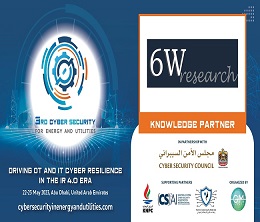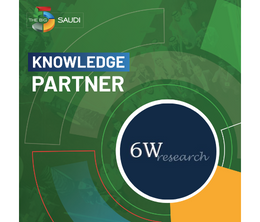Lebanon Nonwoven Fabrics Market (2024-2030) | Outlook , Size, Companies, Value, Revenue, Trends, Forecast, Share, Analysis, Industry & Growth
Market Forecast By Polymer Type (PP, PE, PET, Wood pulp, Rayon, Others), By Layer (Single-layer, Multilayer ), By Function (Disposable, Non-disposable ), By Technology (Spunbond, Wet laid, Dry laid, Others (electrostatic spinning and flash-spun) ) And Competitive Landscape
| Product Code: ETC429943 | Publication Date: Oct 2022 | Updated Date: Apr 2024 | Product Type: Market Research Report | |
| Publisher: 6Wresearch | No. of Pages: 75 | No. of Figures: 35 | No. of Tables: 20 | |
Lebanon Nonwoven Fabrics Market Competition 2023
Lebanon Export Potential Assessment For Nonwoven Fabrics Market (Values in Thousand)
Topics Covered in the Lebanon Nonwoven Fabrics Market Report
The Lebanon nonwoven fabrics market report thoroughly covers the market by polymer type, layer, function, technology and competitive Landscape. The report provides an unbiased and detailed analysis of the ongoing market trends, opportunities/high growth areas, and market drivers which would help the stakeholders to devise and align their market strategies according to the current and future market dynamics.
Lebanon Nonwoven Fabrics Market Synopsis
The nonwoven fabrics market in Lebanon presents a dynamic landscape influenced by diverse applications, technological advancements, and evolving consumer preferences. Nonwoven fabrics, characterized by their versatility and cost-effectiveness, find extensive use across multiple sectors, including hygiene products, medical textiles, and construction materials. The market encompasses a broad spectrum of nonwoven fabrics, such as spun bond, meltblown, and needle punch, each tailored to specific industry requirements. Additionally, a notable trend is the increasing demand for antimicrobial and antiviral nonwoven materials, driven by heightened hygiene awareness and the ongoing emphasis on infection control in various sectors, including healthcare and personal care products. Sustainable and eco-friendly nonwoven fabrics are gaining prominence, aligning with Lebanon's growing commitment to environmentally conscious practices.
In response to the global push for reduced plastic usage, there is a rising trend towards the development of biodegradable nonwoven materials. Additionally, technological advancements are shaping the market, with a focus on enhancing the performance characteristics of nonwoven fabrics, such as breathability, durability, and moisture management. The market is also experiencing a surge in demand for nonwoven materials in the production of protective apparel, including face masks and coveralls. However, the Lebanon nonwoven fabrics industry faces several challenges that impact its growth and operational dynamics. Economic uncertainties and fluctuating consumer spending patterns can affect the demand for nonwoven materials across various industries. The cost of raw materials and production processes poses a challenge, particularly for manufacturers striving to offer competitively priced nonwoven fabrics. Additionally, the market contends with the need for continuous innovation to meet evolving industry standards and consumer preferences, which may require substantial research and development investments.
According to 6Wresearch, Lebanon Nonwoven Fabrics Market size is projected to grow at a CAGR of 12.8% during 2024-2030. The nonwoven fabrics market in Lebanon is experiencing robust growth driven by several key factors that reflect the adaptability and versatility of nonwoven materials across diverse industries. Increased demand in the healthcare sector, particularly for medical gowns, masks, and other hygiene products, serves as a significant growth driver, propelled by ongoing health concerns and the need for reliable protective equipment.
The rising awareness of environmental sustainability is fostering demand for eco-friendly nonwoven fabrics, as consumers and industries in Lebanon prioritize greener alternatives. Additionally, the construction sector is a notable contributor to market growth, employing nonwoven fabrics in applications such as geotextiles and building materials. The convenience and cost-effectiveness of nonwoven materials further drive their adoption in sectors like agriculture, automotive, and packaging. Technological advancements, such as improvements in manufacturing processes and the development of high-performance nonwoven fabrics, contribute to expanding applications and market growth.
Government Initiatives in the Lebanon Nonwoven Fabrics Market
The nonwoven fabrics market in Lebanon benefits from government initiatives aimed at promoting economic development, sustainability, and innovation within the industrial sector. The Lebanese government's support for local industries, including textiles, contributes to the growth of the nonwoven fabrics market. Initiatives focused on research and development, as well as technology transfer programs, encourage innovation and the adoption of advanced manufacturing processes within the nonwoven sector. Also, these agendas have upraised the Lebanon Nonwoven Fabrics Market Share.
Additionally, policies promoting environmental sustainability align with the growing demand for eco-friendly nonwoven materials, encouraging manufacturers to invest in sustainable production practices. Government-backed initiatives also play a role in addressing challenges related to the cost of raw materials and production processes, fostering a conducive environment for the competitiveness and growth of the nonwoven fabrics market in Lebanon. Government Initiatives Introduced in the Lebanon Nonwoven Fabrics Market
Key Players in the Lebanon Nonwoven Fabrics Market
One of the key players in the Lebanon nonwoven fabrics market is Intermed Nonwovens S.A.L. This leading manufacturer produces a wide range of nonwoven materials for use in industries such as hygiene, healthcare, and agriculture. The company, which was established in 1998, has a strong reputation for delivering high-quality products with fast turnaround times. Additionally, another major player in the Lebanon nonwoven fabrics market is Bekaplast S.A.R.L.
This company specializes in the production of nonwoven geotextiles, which are used extensively in the construction industry. Bekaplast's products are known for their strength, durability, and resistance to environmental factors such as UV light, chemicals, and temperature fluctuations. Further, a third important player in the Lebanon nonwoven fabrics market is Fibertex Nonwovens S.A.L. This Danish-owned company has a large production facility in Lebanon and produces a diverse range of nonwoven materials for use in a variety of applications, including hygiene, agriculture, and filtration. Fibertex Nonwovens is committed to sustainability and uses recycled materials in many of its products. Additionally, some of the establishments inhabit substantial Lebanon Nonwoven Fabrics Market Revenues.
Market by Polymer Type
According to Ravi Bhandari, Research Head, 6Wresearch, the different polymer types used in nonwoven fabrics are PP, PE, PET, wood pulp, and rayon. Further, polypropylene (PP) is the most widely used polymer type in nonwoven fabrics in Lebanon, accounting for a market share of around 40%. PP is popular due to its high stiffness, impact resistance, and heat resistance properties. PE (polyethylene) is the second most popular polymer type, with a market share of around 25%. PE has good flexibility, durability, and chemical resistance, making it perfect for making disposable products like bags, sheets, and protective clothing. Moreover, PET (polyester) is also used in nonwoven fabrics in Lebanon, with a market share of around 10%.
PET offers excellent strength, resistance to abrasion, and good moisture management properties, making it ideal for medical textiles like face masks and surgical gowns. Wood pulp, on the other hand, has a market share of around 5% and is mainly used for absorbent products like sanitary napkins and diapers. Rayon has a market share of around 4% and is popular for its softness, absorbency, and durability, making it perfect for clothing and wipes.
Market by Technology
Spun bond technology involves the extrusion of polymer pellets into fine threads, which are spun onto a conveyor belt. The threads are then bonded by heat or chemical treatments, creating nonwoven fabrics. Spun bond technology is widely used in the production of products such as geotextiles, agriculture covers, and medical facemasks. The nonwoven fabric produced by this technology is strong, durable, and has a smooth surface.
Additionally, the fabrics are lightweight and do not fray, making them ideal for most industrial applications. Moreover, the wet-laid technology employs water and organic or synthetic fibers in the production of nonwoven fabrics. The fibers are dispersed in water using a hydro-pulper and then poured onto a conveyor belt to form a web. The web is then pressed and dried to form a nonwoven fabric. Wet-laid technology is commonly used in the manufacturing of wipes, surgical drapes, and hygiene products. The nonwoven fabrics produced by this technology are soft, highly absorbent, and have excellent filtration properties.
Key Attractiveness of the Report
- 10 Years Market Numbers.
- Historical Data Starting from 2020 to 2023.
- Base Year: 2023.
- Forecast Data until 2030.
- Key Performance Indicators Impacting the Market.
- Major Upcoming Developments and Projects.
Key Highlights of the Report
- Lebanon Nonwoven Fabrics Market Overview
- Lebanon Nonwoven Fabrics Market Outlook
- Lebanon Nonwoven Fabrics Market Forecast
- Market Size of Lebanon Nonwoven Fabrics Market, 2023
- Forecast of Lebanon Nonwoven Fabrics Market, 2030
- Historical Data and Forecast of Lebanon Nonwoven Fabrics Revenues & Volume for the Period 2020 - 2030
- Lebanon Nonwoven Fabrics Market Trend Evolution
- Lebanon Nonwoven Fabrics Market Drivers and Challenges
- Lebanon Nonwoven Fabrics Price Trends
- Lebanon Nonwoven Fabrics Porter's Five Forces
- Lebanon Nonwoven Fabrics Industry Life Cycle
- Historical Data and Forecast of Lebanon Nonwoven Fabrics Market Revenues & Volume By Polymer Type for the Period 2020 - 2030
- Historical Data and Forecast of Lebanon Nonwoven Fabrics Market Revenues & Volume By PP for the Period 2020 - 2030
- Historical Data and Forecast of Lebanon Nonwoven Fabrics Market Revenues & Volume By PE for the Period 2020 - 2030
- Historical Data and Forecast of Lebanon Nonwoven Fabrics Market Revenues & Volume By PET for the Period 2020 - 2030
- Historical Data and Forecast of Lebanon Nonwoven Fabrics Market Revenues & Volume By Wood pulp for the Period 2020 - 2030
- Historical Data and Forecast of Lebanon Nonwoven Fabrics Market Revenues & Volume By Rayon for the Period 2020 - 2030
- Historical Data and Forecast of Lebanon Nonwoven Fabrics Market Revenues & Volume By Others for the Period 2020 - 2030
- Historical Data and Forecast of Lebanon Nonwoven Fabrics Market Revenues & Volume By Layer for the Period 2020 - 2030
- Historical Data and Forecast of Lebanon Nonwoven Fabrics Market Revenues & Volume By Single-layer for the Period 2020 - 2030
- Historical Data and Forecast of Lebanon Nonwoven Fabrics Market Revenues & Volume By Multilayer for the Period 2020 - 2030
- Historical Data and Forecast of Lebanon Nonwoven Fabrics Market Revenues & Volume By Function for the Period 2020 - 2030
- Historical Data and Forecast of Lebanon Nonwoven Fabrics Market Revenues & Volume By Disposable for the Period 2020 - 2030
- Historical Data and Forecast of Lebanon Nonwoven Fabrics Market Revenues & Volume By Non-disposable for the Period 2020 - 2030
- Historical Data and Forecast of Lebanon Nonwoven Fabrics Market Revenues & Volume By Technology for the Period 2020 - 2030
- Historical Data and Forecast of Lebanon Nonwoven Fabrics Market Revenues & Volume By Spun bond for the Period 2020 - 2030
- Historical Data and Forecast of Lebanon Nonwoven Fabrics Market Revenues & Volume By Wet laid for the Period 2020 - 2030
- Historical Data and Forecast of Lebanon Nonwoven Fabrics Market Revenues & Volume By Dry laid for the Period 2020 - 2030
- Historical Data and Forecast of Lebanon Nonwoven Fabrics Market Revenues & Volume By Others (electrostatic spinning and flash-spun for the Period 2020 - 2030
- Lebanon Nonwoven Fabrics - Import Export Trade Statistics
- Market Opportunity Assessment By Polymer Type
- Market Opportunity Assessment By Layer
- Market Opportunity Assessment By Function
- Market Opportunity Assessment By Technology
- Lebanon Nonwoven Fabrics Top Companies Market Share
- Lebanon Nonwoven Fabrics Competitive Benchmarking By Technical and Operational Parameters
- Lebanon Nonwoven Fabrics Company Profiles
- Lebanon Nonwoven Fabrics Key Strategic Recommendations
Markets Covered
The Lebanon Nonwoven Fabrics Market report provides a detailed analysis of the following market segments:
By Polymer Type
PP, PE, PET, Wood Pulp, Rayon, Others
By Layer
- Single-Layer
- Multi-Layer
By Function
- Disposable
- Non-disposable
By Technology
- Spun bond
- Wet Laid
- Dry Laid
- Others including Electrostatic Spinning and Flash-Spun
Lebanon Nonwoven Fabrics Market (2024-2030): FAQs
| 1 Executive Summary |
| 2 Introduction |
| 2.1 Key Highlights of the Report |
| 2.2 Report Description |
| 2.3 Market Scope & Segmentation |
| 2.4 Research Methodology |
| 2.5 Assumptions |
| 3 Lebanon Nonwoven Fabrics Market Overview |
| 3.1 Lebanon Country Macro Economic Indicators |
| 3.2 Lebanon Nonwoven Fabrics Market Revenues & Volume, 2020 & 2030F |
| 3.3 Lebanon Nonwoven Fabrics Market - Industry Life Cycle |
| 3.4 Lebanon Nonwoven Fabrics Market - Porter's Five Forces |
| 3.5 Lebanon Nonwoven Fabrics Market Revenues & Volume Share, By Polymer Type, 2020 & 2030F |
| 3.6 Lebanon Nonwoven Fabrics Market Revenues & Volume Share, By Layer, 2020 & 2030F |
| 3.7 Lebanon Nonwoven Fabrics Market Revenues & Volume Share, By Function, 2020 & 2030F |
| 3.8 Lebanon Nonwoven Fabrics Market Revenues & Volume Share, By Technology, 2020 & 2030F |
| 4 Lebanon Nonwoven Fabrics Market Dynamics |
| 4.1 Impact Analysis |
| 4.2 Market Drivers |
| 4.3 Market Restraints |
| 5 Lebanon Nonwoven Fabrics Market Trends |
| 6 Lebanon Nonwoven Fabrics Market, By Types |
| 6.1 Lebanon Nonwoven Fabrics Market, By Polymer Type |
| 6.1.1 Overview and Analysis |
| 6.1.2 Lebanon Nonwoven Fabrics Market Revenues & Volume, By Polymer Type, 2020-2030F |
| 6.1.3 Lebanon Nonwoven Fabrics Market Revenues & Volume, By PP, 2020-2030F |
| 6.1.4 Lebanon Nonwoven Fabrics Market Revenues & Volume, By PE, 2020-2030F |
| 6.1.5 Lebanon Nonwoven Fabrics Market Revenues & Volume, By PET, 2020-2030F |
| 6.1.6 Lebanon Nonwoven Fabrics Market Revenues & Volume, By Wood pulp, 2020-2030F |
| 6.1.7 Lebanon Nonwoven Fabrics Market Revenues & Volume, By Rayon, 2020-2030F |
| 6.1.8 Lebanon Nonwoven Fabrics Market Revenues & Volume, By Others, 2020-2030F |
| 6.2 Lebanon Nonwoven Fabrics Market, By Layer |
| 6.2.1 Overview and Analysis |
| 6.2.2 Lebanon Nonwoven Fabrics Market Revenues & Volume, By Single-layer, 2020-2030F |
| 6.2.3 Lebanon Nonwoven Fabrics Market Revenues & Volume, By Multilayer, 2020 - 2030F |
| 6.3 Lebanon Nonwoven Fabrics Market, By Function |
| 6.3.1 Overview and Analysis |
| 6.3.2 Lebanon Nonwoven Fabrics Market Revenues & Volume, By Disposable, 2020-2030F |
| 6.3.3 Lebanon Nonwoven Fabrics Market Revenues & Volume, By Non-disposable, 2020 - 2030F |
| 6.4 Lebanon Nonwoven Fabrics Market, By Technology |
| 6.4.1 Overview and Analysis |
| 6.4.2 Lebanon Nonwoven Fabrics Market Revenues & Volume, By Spunbond, 2020-2030F |
| 6.4.3 Lebanon Nonwoven Fabrics Market Revenues & Volume, By Wet laid, 2020-2030F |
| 6.4.4 Lebanon Nonwoven Fabrics Market Revenues & Volume, By Dry laid, 2020-2030F |
| 6.4.5 Lebanon Nonwoven Fabrics Market Revenues & Volume, By Others (electrostatic spinning and flash-spun), 2020 - 2030F |
| 7 Lebanon Nonwoven Fabrics Market Import-Export Trade Statistics |
| 7.1 Lebanon Nonwoven Fabrics Market Export to Major Countries |
| 7.2 Lebanon Nonwoven Fabrics Market Imports from Major Countries |
| 8 Lebanon Nonwoven Fabrics Market Key Performance Indicators |
| 9 Lebanon Nonwoven Fabrics Market - Opportunity Assessment |
| 9.1 Lebanon Nonwoven Fabrics Market Opportunity Assessment, By Polymer Type, 2020 & 2030F |
| 9.2 Lebanon Nonwoven Fabrics Market Opportunity Assessment, By Layer, 2020 & 2030F |
| 9.3 Lebanon Nonwoven Fabrics Market Opportunity Assessment, By Function, 2020 & 2030F |
| 9.4 Lebanon Nonwoven Fabrics Market Opportunity Assessment, By Technology, 2020 & 2030F |
| 10 Lebanon Nonwoven Fabrics Market - Competitive Landscape |
| 10.1 Lebanon Nonwoven Fabrics Market Revenue Share, By Companies, 2023 |
| 10.2 Lebanon Nonwoven Fabrics Market Competitive Benchmarking, By Operating and Technical Parameters |
| 11 Company Profiles |
| 12 Recommendations |
| 13 Disclaimer |
- Single User License$ 1,995
- Department License$ 2,400
- Site License$ 3,120
- Global License$ 3,795
Search
Related Reports
- India Solid Wood Market (2024-2030) | Revenue, Growth, Trends, Forecast, Value, Industry, Size, Share, Analysis & Companies
- Southeast Asia Elevator And Escalator Market (2023-2029) | Industry, Value, Revenue, Size, Growth, Forecast, Trends, Analysis, COVID-19 IMPACT, Companies & Share
- Global Luxury Fibers Market (2024-2030) | Revenue, Growth, Trends, Forecast, Value, Industry, Size, Share, Analysis & Companies
- Saudi Arabia Conductors Market (2024-2030) | Share, Trends, Value, Analysis, Outlook, Forecast, Growth, Industry, Companies, Size & Revenue
- Australia Fire Doors Market (2023-2029) | Share, Trends, Value, Analysis, Outlook, Forecast, Growth, Industry, Companies, Size & Revenue
- UAE Online Gifting Market (2023-2029) | Size, industry, Revenue, Growth, Size, Share, Value, Outlook & COVID-19 IMPACT
- India Baby Product Market (2024-2030) | Share, Trends, Value, Analysis, Outlook, Forecast, Growth, Industry, Companies, Size & Revenue
- India Multiprotocol Label Switching-Transport Profile Market (2024-2030) | Share, Trends, Value, Analysis, Outlook, Forecast, Growth, Industry, Companies, Size & Revenue
- India Plant Protein Market (2023-2029) | Share, Trends, Value, Analysis, Outlook, Forecast, Growth, Industry, Companies, Size & Revenue
- India Switches Market (2024-2030) | Share, Trends, Value, Analysis, Outlook, Forecast, Growth, Industry, Companies, Size & Revenue
Industry Events and Analyst Meet
Our Clients
Whitepaper
- Middle East & Africa Commercial Security Market Click here to view more.
- Middle East & Africa Fire Safety Systems & Equipment Market Click here to view more.
- GCC Drone Market Click here to view more.
- Middle East Lighting Fixture Market Click here to view more.
- GCC Physical & Perimeter Security Market Click here to view more.
6WResearch In News
- India's Printer Market Faces 20.7% Decline in Q4 2023: Epson and HP Lead Amidst Downturn
- India's Camera Market Sees 8.9% Decline in Q4 2023; Canon Leads with 38.4% Share
- Doha a strategic location for EV manufacturing hub: IPA Qatar
- Demand for luxury TVs surging in the GCC, says Samsung
- Empowering Growth: The Thriving Journey of Bangladesh’s Cable Industry
- The future of gaming industry in the Philippines













